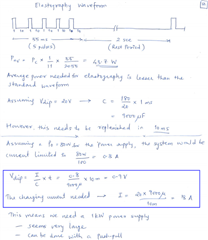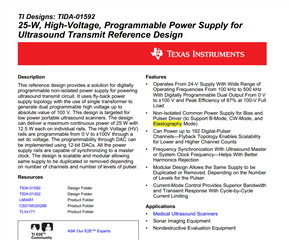Other Parts Discussed in Thread: TIDA-01592
Hi @Sanjay Pithadia Abhishek Vishwa
This TIDA-01371 and TIDA-01592 ref design is very useful. some questions to consult.
nice discussion in the orignal post is :https://e2e.ti.com/support/tools/simulation-hardware-system-design-tools-group/sim-hw-system-design/f/simulation-hardware-system-design-tools-forum/896024/tida-01371-the-pull-current-of-a-capacitive-load-from-a-pulsed-source?tisearch=e2e-sitesearch&keymatch=TIDA-01371#
1. For equation(1), I agree that, from energy perspective, "the equivalent power related either positive or negative voltage source is C*V2*f, instead of 4*C*V2*f ". but the doc seems unchanged.
But, Can we see this question from impedance perspective:
HV+ or HV- should provide power during 1/2 T0 ( T0=1/f) : P = V*V/ Zc = V*V / [1 / (2*pi *f * C) ] = 6.28 * V*V* f * C. now the factor is x6.28 isntaed of x4. How do you think?
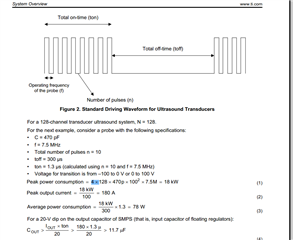
This post also discuss this question, but the picture seems un-openable.
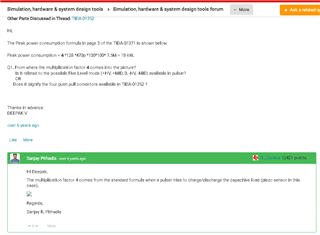
2. This ref design is 20A/100V, it is 2KW rather than 80W, what does this 0.8A mean in page 5 for Elastography? seems irrelevant。
Also, I did not found a 9000uF (so large) output capacitor on sch. Could you help explain?
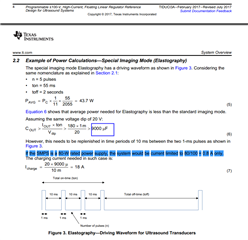
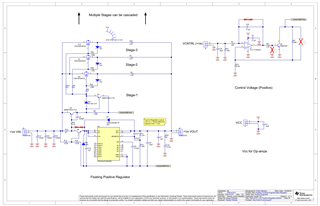
3. I also noticed newer ref design TIDA-01592, which mentioned 15-30W is enough, much less than 2KW in TIDA-01371 . which one is correct? Calculation of power capabilities of HV power (especially for shear wave mode) is confusing me. maybe you could help. we are doing 128channel medical u/s. +/-100V.
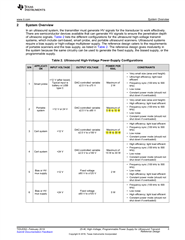
Thanks very much!



